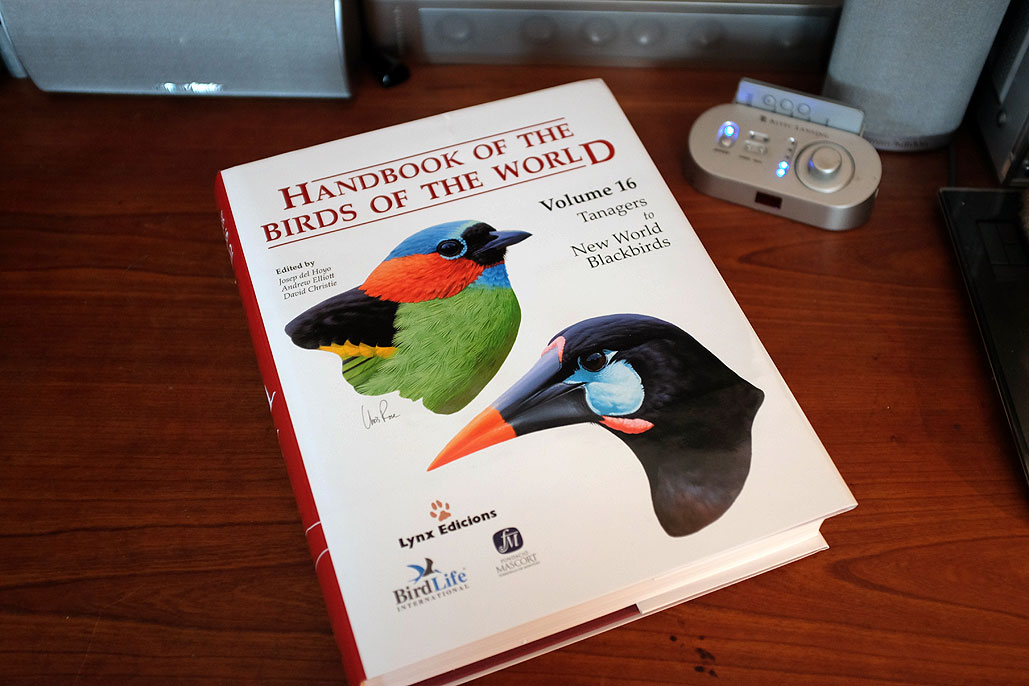

The order in which families and species are presented immediately raises the question of classification -or, more correctly, that of 'standard sequence'. The birds covered in Volume 2 are the Falconiformes and Galliformes (both popular groups in aviculture). The more I look at the Handbook, the more I am impressed by the quality of the planning that must have gone into this project: every detail has obviously been carefully thought through in advance, and if those responsible made any wrong decisions, I have yet to find one. Weight for weight, these books are cheaper than most! Moreover, the typefaces used are fairly small -though perfectly clear- so, as well as the superb illustrations, those 638 pages hold more text than you might expect. If the remaining ten volumes keep up the standard of the first two -and all the omens suggest that they will- the Handbook will end up as not merely the best bird book yet published, but the best that is ever likely to be published.įor those who have not yet seen either of them, and who find the price alarming, it is worth pointing out that these volumes are not merely crammed with information and beautiful to look at, but also very big -about 250 mm by 320 mm, and weighting over 3 1/2 kg- so you get a lot of book for your money. Anyone who has seen Volume 1 will know that this is praise enough. Review:Īll that a reviewer really needs to say about Volume 2 of the Handbook of the Birds of the World is that it is as good as Volume 1. Josep del Hoyo: Vice-president, Sociedad Española de Ornitología, SEO-BirdLife, Spain. Eduardo de Juana: Departamento de Biología Animal, Universidad Complutense de Madrid, Spain. Kemp: Head Curator, Department of Birds, Transvaal Museum, Northern Flagship Institution, Pretoria, South Africa. Kiff: Director, Western Foundation of Vertebrate Zoology, California, USA. Isabel Martínez: Grup Català d'Anellament, Museu de Zoologia, Barcelona, Spain. McGowan: Biology Department, the Open University, Milton Keynes, England.

Meyburg: Chairman, World Working Group on Birds of Prey and Owls (WWGBP), Berlin, Germany. Olsen: Australian National University, Canberra, Australia. Jaume Orta: Consultant, Servei de Protecció i Gestió de Fauna. Poole: Managing Editor, The Birds of North America, the Academy of Natural Sciences of Philadelphia, Pennsylvania, USA. Porter: College of Environmental Science and Forestry, State University of New York, USA. Thiollay: Laboratoire d'Ecologie, Ecole Normale Supérieure, CNRS, Paris, France. White: College of Biology and Agriculture, Brigham Young University, Provo, Utah, USA. Andrew Elliott: Grup Català d'Anellament, Museu de Zoologia, Barcelona, Spain. Debus: Department of Zoology, University of New England, Armidale, New South Wales, Australia. Clark: Freelance raptor researcher, Virgina, USA. Carroll: Department of Biological and Environmental Sciences, California University of Pennsylvania, USA.

Bock: Department of Biological Sciences, Columbia University, New York, USA. The piece of the article also reflects on future management and planning regarding the safety of these species.David Houston: Applied Ornithology Unit, Glasgow Univesity, Scotland. Finally, this write-up encounters a new and intriguing way of counting the number of birds with better precision as well as it produces unbiased data regarding their ecological importance, distribution, home ranges, and, activation hours, which eventually infers the foremost causes of extinction leading to possible researches in different subsections. This paper directly points out the causes of the decreasing rate of frequency of the house sparrows to make sense among the common people as well as, focuses on the hamper caused by the Electromagnetic pressure which is not endurable for the thin skulled species. Every element of an ecological niche plays a crucial role in maintaining nature, similarly does the sparrow. Currently, the house sparrow density per square meter is 0.0161315. The data of the birds' distribution is very much needed to focus on their rapidity of getting endangered. We preferred direct photogenic tracking for roosting sites and used new instrumentation for measuring home ranges and density calculation. In this piece of article, we are intending to find the current ecological distribution of house sparrows in the specific areas of the southern parts of Asansol. The house sparrows are declining in numbers rapidly. For various reasons, there are also many birds streaming down the lane of extinction and one of them is house sparrows. It has become modern to ultramodern leaving no space to the homeland for different animals as well as plants. The world has witnessed many species on the way of getting endangered during the last few decades.


 0 kommentar(er)
0 kommentar(er)
